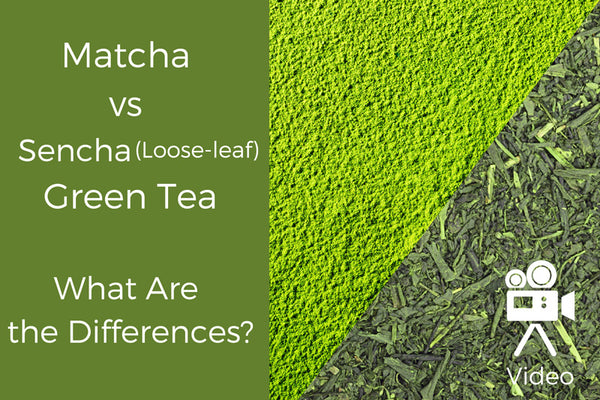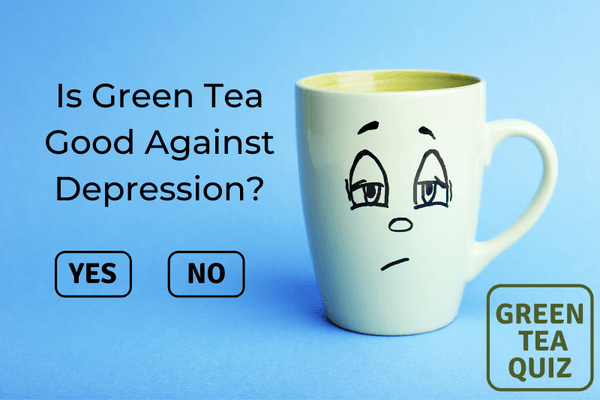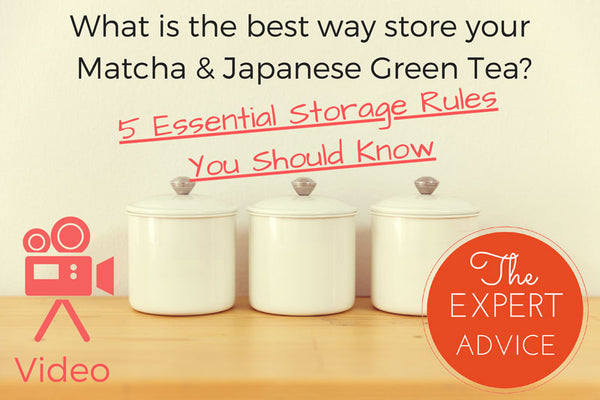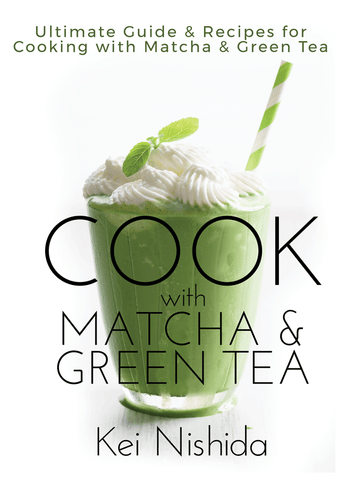Is Benifuuki Tea The Same As Matcha?

Matcha is increasingly becoming a favorite in the world of tea for many. Without question, part of its attraction is the myriad of use cases. However, matcha’s flavor and overall distinction from other teas such as Sencha or Gyokuro help further separate itself as a unique and favorite tea. Many of you may already know some additional dictions between matcha and other teas but more specifically, what separates Benifuuki tea from matcha? Are there are similarities? What are the differences? I want to spend a few minutes talking about these two teas. In part, this is an educational exercise, but more importantly, it may also help you see the value of these teas in a different way.
Tea: A Background
What exactly is tea? You may be surprised to know that the chamomile or soba cha (buckwheat tea) is not actually tea. In fact, these two “teas” are infusions and not officially teas. All tea comes from a single plant. Odd, I know but the plant we are talking about is called Camellia Sinensis. While you may see Japanese fields of tea in neatly arranged rows, this plant grows like a mounded bush. Yes, it can develop flowers and yes it’s hard to imagine both matcha and gyokuro come from this naturally brighter green-leafed plant.
The management and post-processing of leaves help define many of the teas you drink at your table. For example, Gyokuro gets its unique flavor profile and look from farmers shading the leaves for several weeks before harvest. Matcha, as you may well imagine, are the grounded up leaves of the plant. While both Gyokuro and matcha processes are more complicated than noted, the differences outlined to give you a glimpse into the flexibility of the “tea plant”.
When we talk about camellia sinesis, it's common to bring up different kinds of cultivars. Cultivar refers to a plant variety that has been produced by selective and purposeful breeding. Horticulturalists seek out various qualities in plants, and in this case camellia sinesis, and seek to replicate those qualities through reproduction. In fact, cultivation techniques have been used to create all kinds of cultivars you may recognize including wheat and rice you find at the store.
What is Benifuuki tea?
Benifuuki, meaning “red riches and honor”, is a cultivar of camellia sinesis. Introduced to Japanese farmers in 1993, this cultivar has larger flowers and leaves than the most common Japanese cultivar, Yabukita. Further, it generally has a higher yield and is not shaded like Gyokuro mentioned above. The chemical makeup and sunlight allow for a higher catechin count. While slightly more bitter than its Japanese tea counter-parts it's possible to attain a balance in flavor with each drink. From a health perspective, however, the more bitter, the better.

Benifuuki tea, like many other Japanese green teas, is harvested and picked. The leaves are similar to many other cultivars at first glance. However, Benifuuki tea leaves are often stored for several months which increases its catechin amount (see below). The tea is fermented at lower temperatures. The tea is then steamed, rolled and pressed, and then gently grounded into a fine-matcha looking powder.
Its biochemical makeup includes unique benefits: There are several types of catechins: The more common and the rarer. The more common catechins are found in many green teas and include (-)-epicatechin (EC), (-)-epigallocatechin (EGC), (-)-epicatechin-3-gallate (ECG), and (-)-epigallocatechin-3-gallate (EGCG). The most abundant is that of EGCG (approx. 60%) then EGC (approx. 20%) then ECG (approx. 14% and lastly EC (6%). Benifuuki, for example, contains the highest concentrated amount of EGCG averaging approx. 10.1% EGCG while the most common cultivar in Japan, Yabukita averages approx. 7.7% EGCG. But what does this mean for my health? EGCG, for example, and its specific unique application to green teas, has shown to help alleviate allergies as well as support in the prevention of infections.
I have also mentioned “rarer” catechins. These catechins are Methylated Catechins. Benifuuki contains epigallocatechin-3-O-(3-O-methyl) gallate or EGCG3 “Me and epigallocatechin-3-O-(4-O-methyl) gallate or EGCG4 “Me catechins. But what makes these catechins stand out? They’re more potent and higher levels of these catechins are found in Benifuuki. These catechins have been shown to be more potent than the catechins noted above. If you are looking for the perfect allergy tea, it’s hard to miss the health benefits of Benifuuki. In fact, the greatest concentration of EGCG3 “Me is found in the fall and winter harvest.
In combination with its unique catechins-makeup, Benifuuki tea also includes hydrolyzable tannins. This helps solidify the tea as an anti-allergic tea to help with hay fever, dermatitis, histamine reduction, etc.
What is matcha?
Yes, we all know the beautiful powder that is matcha. Let’s take a few minutes to understand where matcha comes from and how it differs from Benifuuki.
Tencha is the leaves used to making matcha. Ten means “mortar” and cha, of course, refers to “tea” (genmaicha, sencha, etc.). In terms of growing, tencha is also shaded for approx. 3 weeks and then harvested. Once harvested, tencha leaves are stemmed. The leaves are then dried. Versus other teas such as gyokuro, the leaves are not in fact kneaded. This is primarily to ease the removal of steams and to help attain a flat leave for matcha production. If one were to make matcha out of the recently picked tencha leaves, the tencha is then de-stemmed and graded. This process includes deveining and destemming the leaves in order to ensure quality. The remaining leaves are graded and grounded slowly.

While both Benifuuki and matcha are derived from camellia sinesis, matcha is not produced from Benifuuki’s cultivar. In regards to taste, higher-grade matcha is often smoother and easier to drink. Benifuuki isn’t often applied to the world of baking or added as a latte ingredient. It’s known more as a “support” tea than an all-purpose tea.
Matcha does, however, include a number of notable health benefits. One of the missing components of Benifuuki tea is the absence of a variety of nutrients you can find in other Japanese green teas. Matcha, on the other hand, contains many of the catechins discussed above, however not all of them. It contains a majority of EGCG, L-Theanine, fiber, vitamin C and A, potassium, and amino acids. L-Theanine is unique in some respects due it its ability to promote relaxation and improve brain functioning. While it's relatively common in tea, this amino acid may be up to several times more concentrated in matcha. In other words, matcha is healthy, for slightly different reasons.
Should I compliment these two teas?
Hopefully, the health benefits discussed today have provided a snapshot into the world of matcha and Benifuuki. They compliment each other depending on your needs. As you can guess, teas have all kinds of added benefits and unique properties. Part of exploring the world of tea is understanding the research behind it all. While this article doesn’t provide every detail relating to catechins or L-Theanine, the conclusions should help. Keep this in mind the next time you’re shopping for tea, who knows maybe a couple of drinks of Benifuuki and/or matcha will help stave off those allergies that don’t seem to go away.
What is Benifuki Tea? Explained in One Minute
Click here to jump to the Youtube Video
Watch me explain about Benifuki to ChaCha
Click here to jump to the Youtube Video
Buy Matcha Green Tea
Buy Benifuki Green Tea
Related Articles You May Be Interested
Also in Japanese Green Tea Lovers in India

TYPES OF TEA: MATCHA VS SENCHA GREEN TEA: WHAT ARE THE DIFFERENCES?
When it comes to different types of tea, matcha and sencha green tea are two many people have questions about! Get answers in this post.

Is Green Tea Good Against Depression?

What is the best way to store your matcha & Japanese green tea?
5 Essential Storage Rules for Matcha and Japanese Green Tea
Read on to learn how to store matcha the proper way to ensure that you get the most out of this ancient elixir.

































